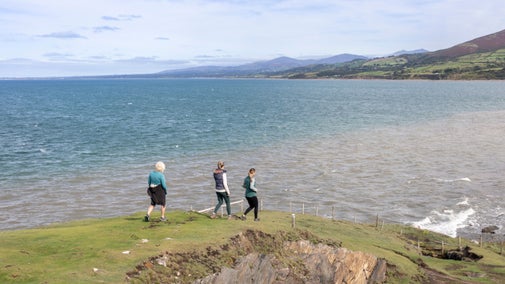Godrevy to Hell's Mouth coastal walk
Cornwall
Taking you around Godrevy headland to the dramatic Hell's Mouth and back again via exhilarating clifftop pathways and glorious ocean views, this trail also takes in the wonderful heathland of the Knavocks.
Near to
GodrevyStart point
Godrevy National Trust car park, grid ref: SW583423Trail information
More near here
Godolphin Hill walk
This gentle ramble up to the top of Godolphin Hill will reward you with some of the most impressive views over West Cornwall you can find.

Wheal Coates tin mining walk
Explore the remnants of Wheal Coates's tin mining history, while taking in beautiful views of the Atlantic, on this short circular coastal walk.

Get in touch
Our partners

We’ve partnered with Cotswold Outdoor to help everyone make the most of their time outdoors in the places we care for.
You might also be interested in
Top coastal walks
Explore some of the UK's most famous natural landmarks on a coastal walk. With a variety of walking trails offering clifftop views, golden sands and local wildlife, there's a walk for everyone.

Things to see and do at Godrevy
Discover the sights and activities at Godrevy, including miles of golden sands, surfing, clifftop walking routes, wildlife watching and much more.

Staying safe at National Trust places
The special places in National Trust care sometimes come with a few risks for visitors, be it coastline or countryside. Find out how to keep safe throughout your visits.

Cotswold Outdoor: our exclusive walking partner
Learn about the National Trust’s ongoing partnership with Cotswold Outdoor. Find out how they help us care for precious places and the exclusive discount available for National Trust supporters.

Walking in Cornwall
From strolls that reward you with stunning views of the South West coast to gentle inland meanders, these are some of the best walks in Cornwall.

Walking
Explore some of the finest landscapes in our care on coastal paths, accessible trails, woodland walks and everything in between. Find the best places to walk near you.

